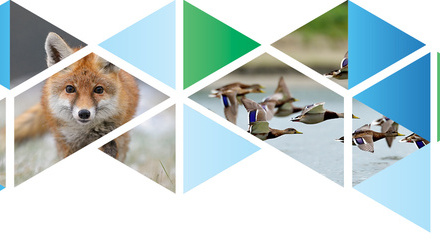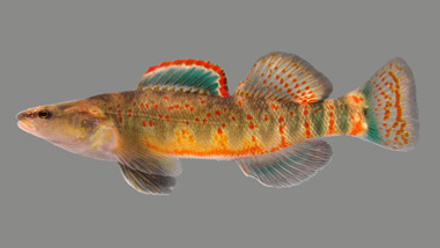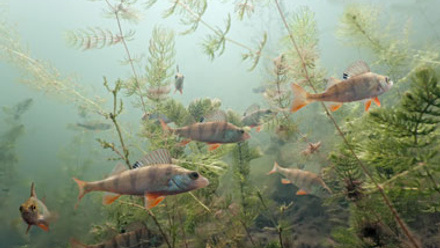Highlights from the Terrestrial Vertebrates Risk Assessment to Pesticides Symposium
Ana Cione, Gustavo Santos, Mário Paniago, Steven Kragten, Jon Maul, Syngenta Crop Protection; Veríssimo Sa, Valentin Mingo, Manousos Foudalaskis, Corteva Agrisciences; Flavio Rodrigues, Letícia Scopel, Camila Martin, ECOTOX Brasil
A great mix of people joined SETAC LA for the symposium. Photo by Ana Cione
From 12–14 April, the Society of Environmental Toxicology and Chemistry Latin America (SETAC LA) and the Brazilian Society of Ecotoxicology (ECOTOX Brasil) organized a virtual symposium on “Risk Assessment of Pesticides to Terrestrial Vertebrates – Birds and Mammals and Reptiles and Amphibians.”
Based on the global SETAC premises and goals around the multidisciplinary approaches to solving environmental problems, balanced participation, involved stakeholders from all sectors, and science-based objectivity, the goal of this meeting was to build knowledge by bringing together experts and participants with diverse perspectives.
Brazilian environmental regulation is facing an intense transition process from a hazard-based approach, wherein a hazard classification based on toxicity was the main criteria for chemical registration and label language, to a risk-based approach. As a result, the Brazilian Environmental Agency (IBAMA) is working on the development of pesticide risk assessment guidelines and recently shared questions and concerns regarding different topics, such as the applicability of international tools and the tools’ premises to Brazilian agricultural practices, including no tillage and soil care, the unique climate and weather in the country, and the size and intensity of agriculture, landscape and crops. It is necessary for those working on the upcoming risk assessment framework to consider how interchangeable the criteria from other regulatory agencies, such as the U.S. Environmental Protection Agency (USEPA), the European Food Safety Authority (EFSA) or the Pest Management Regulatory Agency (PMRA) in Canada, etc., would be if it is to be effective. And finally, environmental professionals have expressed specific questions about birds, mammals, reptiles and amphibians, and the practicality of using USEPA tools such as the Terrestrial Residue Exposure tool (T-REX) and T-HERPS. Considering this scenario, SETAC LA and ECOTOX Brasil organized a symposium where speakers from environmental authorities from Brazil (IBAMA) and the United States (USEPA), as well as from academia and agrochemical companies, could advance the common goal of building knowledge, sharing experiences, and identifying the challenges and opportunities around this transition.
The event was held across three days and started off with a general introduction of the topic, including the motivation for the symposium. Participants from IBAMA presented the state of the science in Brazilian regulation for birds, mammals, reptiles and amphibians. Representatives from industry complemented the information, with an overview on the regulation and global requirements of risk assessment schemes on terrestrial vertebrates. Representatives from academia shared their view on the risk evaluation of pesticides to birds, mammals, reptiles and amphibians. At the end of the first day, all groups acknowledged that the regulatory science on birds and mammals, as well as that for reptiles and amphibians, is evolving. A basic understanding of the ecotoxicology of these organisms is fundamental. However, there are still important knowledge gaps to be addressed – where the ecotoxicology in Brazil can tie to research happening globally and connect with the regulatory needs in decision-making.
On day two, discussions and presentations focused on birds and mammals. The main objective on this day was to exchange the knowledge and experiences about the new environmental risk assessment and discuss the opportunities and challenges. Additionally, T-REX, the USEPA tool used for calculating pesticide residues on avian and mammalian food items, was presented, followed by an audience question and answer session. The fruitful discussions confirmed the premises of the day before. Participants raised questions about the dynamics involved in the decision-making process regarding implementation of new risk assessments approaches in Brazil. There were also questions about the feasibility of T-REX as a screening tool, taking into account that a risk–benefit analysis is part of the regulatory decision.
The last day was dedicated to reptiles and amphibians. Studies and results from the scientific literature were presented, and the perspectives for risk assessment, opportunities, challenges and knowledge gaps were discussed. The USEPA representative presented an overview on the T-HERPS model to estimate the terrestrial reptiles and amphibians’ exposure to pesticides. Later, representatives from industry presented an overview about the use of fish as surrogate for risk assessment of the aquatic phase of amphibians and methodologies to estimate dermal exposure in amphibians and reptiles. The topics engaged the audience, and productive discussions were followed by questions and answers sessions.
In summary, attendees shared relevant and practical information about the tools that can be readily and easily employed with the purpose of being a screening and conservative tool for initial tiers of the risk assessment. We agreed that ecotoxicology needs to advance and break new barriers to fill important data gaps that are globally relevant, especially regarding toxicity to reptiles and amphibians and exposure. Many symposium participants raised concerns about reducing and avoiding animal testing, noting that the focus should be on finding alternative approaches, methods and surrogate species. This is currently being discussed worldwide by regulatory agencies.
The symposium achieved its objective. It emphasized the importance of promoting scientific discussion about relevant themes, such as regulatory ecotoxicology, by involving all interested stakeholders; promoting an open, science-based dialogue among representatives from society; and provide a space to share knowledge for SETAC members and students.
The #SETACLA together with #ECOTOXBrazil thank all presenters and organizers for their commitment and dedication!
Author’s contact information: Ana Cione, [email protected]






